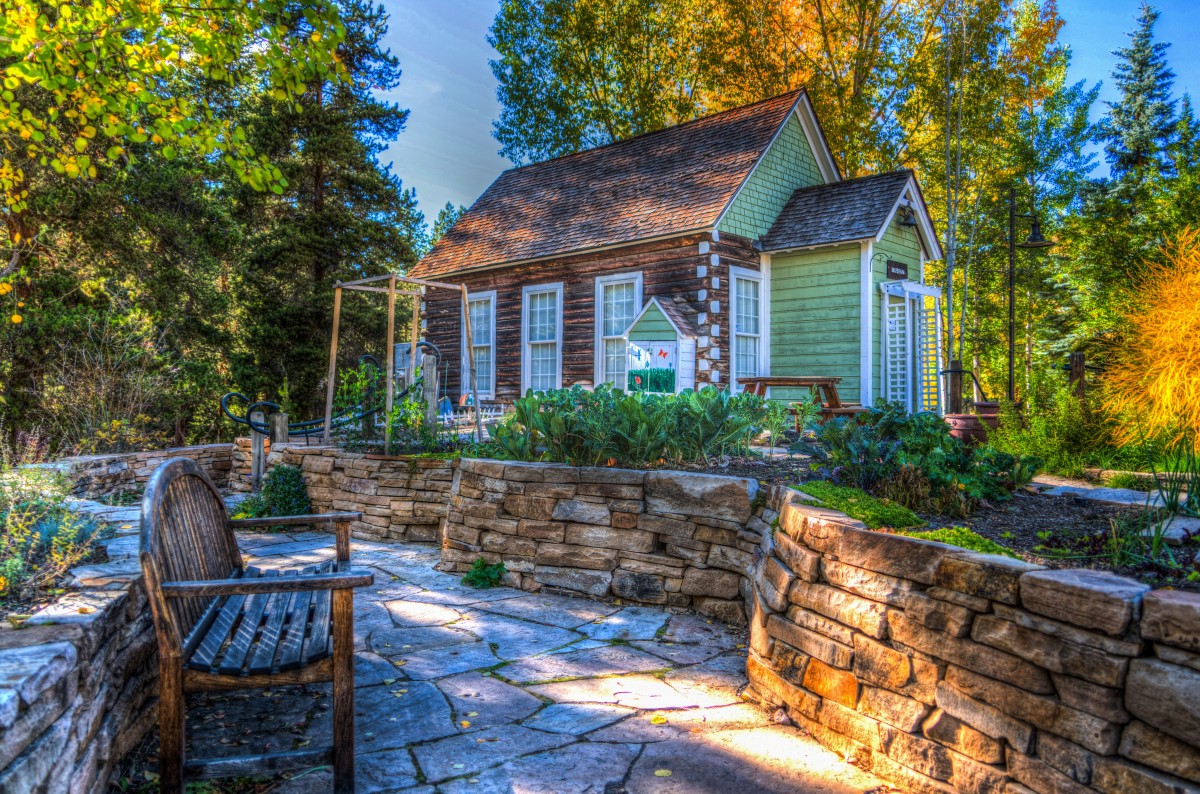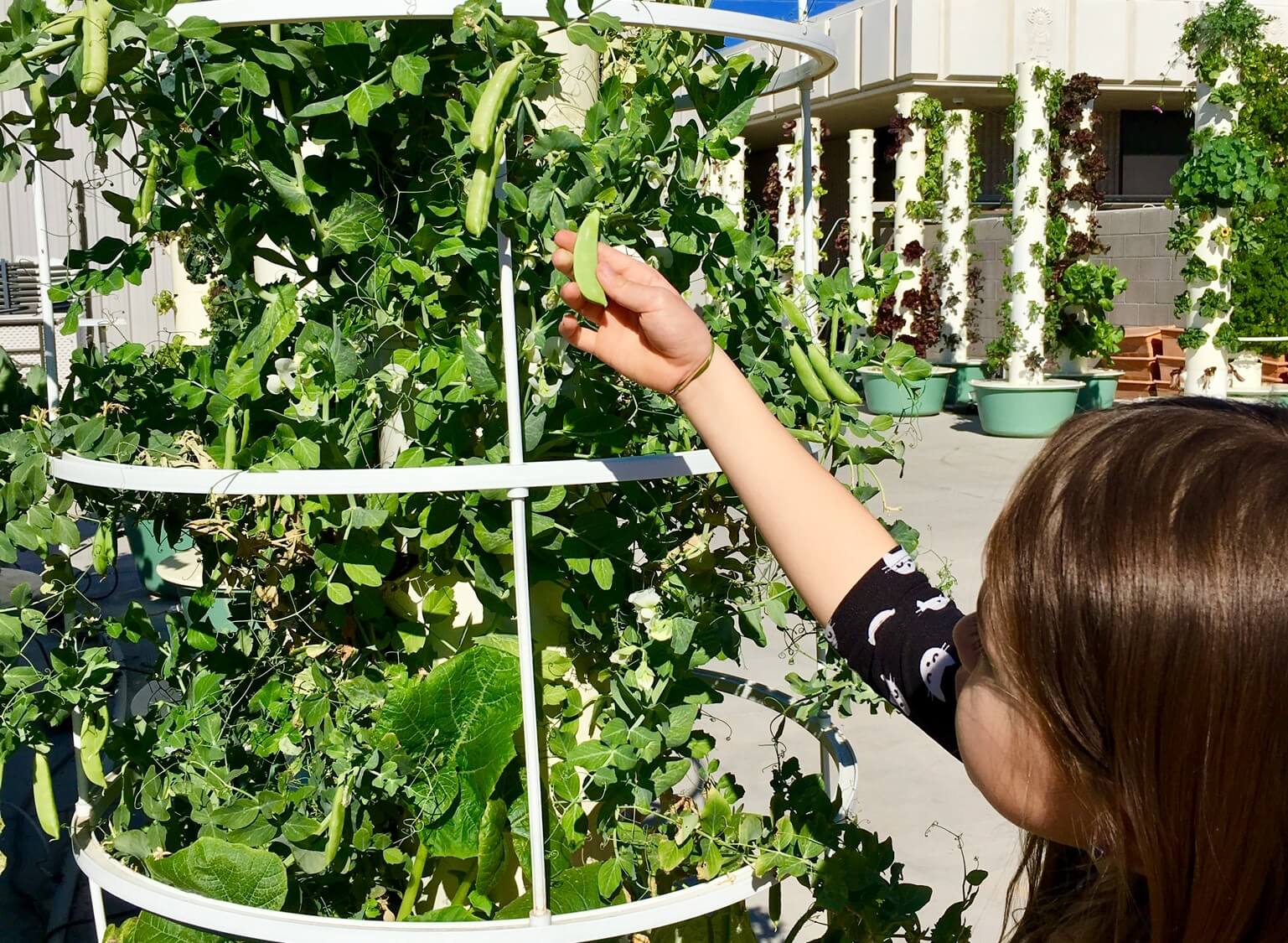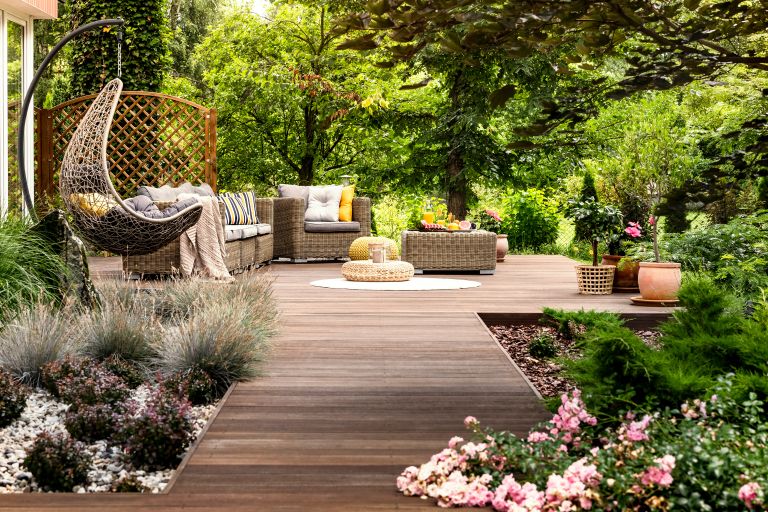6 Tips to Enlarge Your Small Garden
Is your garden too small to make the most of it? Is it a real headache to arrange it? Not everyone is lucky enough to have a large garden, especially in the city where they are rare and lack space. What are the secrets to optimizing space in a small garden? This article gives you 6 tips to enlarge your small garden and enjoy it fully.
The essential
- Placing rising plants at the edge of the garden makes it look larger.
- Massive equipment is not recommended in gardens that lack space.
- Playing with perspectives and levels in a small garden will give the impression that it has more space.
1. Clear the space
The first thing to do to make your garden look bigger is to clear out as much clutter as possible. Remove plants, trees, and other vegetation in the heart of your yard in favour of a clear central axis. Instead, place them at the edges of the garden to conceal its boundaries.
Plant your plants rather tightly and play with their heights to create a natural depth effect in your garden. This will give an abundant appearance and will instinctively attract the eye.
Be careful not to choose plants that are too large. Ask about the development of plants and ask for advice before selecting them for your small garden.
You can also put objects next to the plants to make your garden appear larger. For example, a fountain hidden in the plants will attract the eye. The sound of flowing water will produce a cognitive bias that will reinforce the impression of size. You will feel that your garden is larger than it is.
Finally, don’t overload your yard with imposing elements. Focus on strong, appropriate, and useful pieces. Clearing the area will make it visually less small.
2. Exploit the height

Whether it’s for your plants or your vegetable garden, exploiting height is the best thing you can do for gardens that are short on space. Yes, you really can have vegetables and herbs in your small garden! Salads, tomatoes, onions, strawberries, and other fruits and vegetables can be grown vertically.
For climbing varieties, a simple vertical frame on the ground in the corner of your garden is all you need to grow your vegetables. For the others, simply create a green wall combining vegetables and herbs. Alternatively, hanging pots from a patio pergola will save space and add a decorative touch to your small garden.
You can also grow climbing plants along a wall to enlarge gardens with limited space. They will bring movement and draw your eye. You can also grow them on the frames of a pergola to create a beautiful plant shelter and a soothing terrace.
Jasmine or honeysuckle, for example, are popular and not too bulky. Shrubs such as cypresses also easily find their place in small gardens. Their size will make you look up to the sky!
Focus on small furniture

Choosing the right equipment is undoubtedly the most important thing to do to design your garden properly. Be careful not to clutter up the space you’ve gained with massive accessories. Otherwise, you won’t be able to move around easily or take full advantage of your outdoors.
Minimalism is the watchword for the design of your small garden! Avoid imposing outdoor sofas and choose folding chairs with slender lines. Smaller pieces of furniture are preferable to push the walls of your garden further. Extendable tables and other accessories that can be easily stored are also welcome.
Play with perspective to make your home garden seem larger. For example, a bench or a side table along a green wall will give the impression that it is wider than it really is. Add 1 or 2 brightly coloured flower pots to your bench, bringing an aesthetic appeal to your garden.
Create different spaces
Creating different spaces in your garden will make it look bigger. Multiply the functions of your small garden, and your visitors will not realize its true dimensions!
You can organize them around a central element, such as a terrace or a simple lawn. To delimit them, planted walls or fences will do the trick. Don’t hesitate to use different materials to cover the ground: wood for the terrace, a piece of grass for the children’s play area, or gravel to create a Japanese garden, for example. This will give more relief to your garden, which will then seem less small.
Playing with levels is also a good way to enlarge small gardens. The layout of levels of different heights will immediately give the impression that your garden is larger and will give it a certain cachet. Create a raised wooden deck and a small floral area accessible by a staircase, and you’re done!
Good To Know
If you’ve given up on your dream of a pool because your land doesn’t allow it, you should know that alternative solutions exist. Among the ideas to explore: a pool with a shallow bottom, a simple and decorative way to bring a little water into your haven of peace!
Install mirrors
Placing mirrors in your small garden as you would decorate your home is a really effective solution to make it look bigger. Hanging or along a wall, they will add a decorative touch and extend your garden by reflection.
To accentuate the trompe l’oeil effect and gain even more space, you can install them on a door or a window that you will place at the bottom of your garden. This decorative touch will give the impression that there is extra space behind it.
Designing the access to the garden
Creating access to the garden that immerses you in its atmosphere as soon as you leave your house will make you forget its boundaries.
Creating a winding path lined with perennials and shrubs is a good way to give the illusion that your garden is larger since the perspectives will be redefined. This way, you will be immersed in a bucolic setting as soon as you leave your house, as if your garden started at your front door. The access to your garden will be even more progressive if you organize it in different spaces. You will feel that it is visually larger. And for a more aesthetic path, don’t hesitate to add light fixtures of different colours. They will sublimate the surrounding plants and allow you to use them easily to enjoy the beautiful summer evenings in your garden.
Finally, you can entrust the design of your small garden to a landscape gardener. He will use additional tricks specifically adapted to the configuration of your land to optimize it completely. You can also consult a landscape gardener if you want to design your own garden: he will advise you on the flowers and trees to choose to enhance it.





